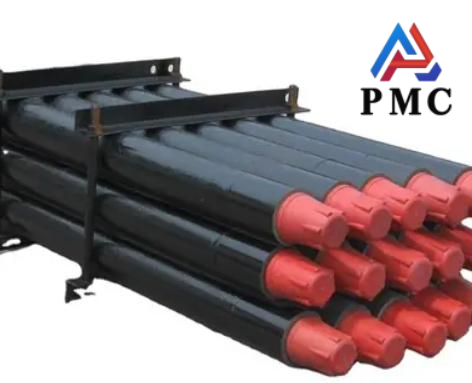
How to Choose Oil Drill Pipes Suitable for Different Geological Conditions?
The oil drill pipe is an indispensable tool in oil exploration and production. It has seamless and welded drill pipes. In oil production, oil drill pipes have three main functions. The first is to transmit power, transferring the torque and axial force of the ground drilling rig to the drill bit, causing it to rotate, drill or pull. The second is to transport drilling fluid, allowing the drilling fluid to pass through the inside of the drill pipe to the drill bit, which is used to cool the drill bit and carry rock cuttings. The third is to form a drill string with other tools to support the well wall, maintain the stability of the wellbore, and control the wellbore trajectory in special drilling processes.

How to Choose Oil Drill Pipes Suitable for Different Geological Conditions?
Selecting oil drill pipes suitable for different geological conditions is crucial to improving exploration and production efficiency. When choosing oil drill pipes, there are several factors to consider:
1. Drill pipes material: For general geological conditions, drill pipes made of carbon steel or alloy steel can meet the needs. However, for complex geological conditions, such as high temperature, high pressure, and high hardness formations, it is necessary to select special alloy steel drill pipes that are corrosion-resistant and wear-resistant.
2. Drill pipes length and diameter: The length and diameter of the drill pipe should be selected according to the specific drilling task and geological conditions. Generally speaking, the larger the diameter, the higher the stiffness, which is more advantageous for formations with higher hardness; The longer the length, the higher the drilling efficiency and depth.
3. Drill bit shape and blade angle: Different geological conditions require drill bits with different shapes and blade angles. For soft formations, you need to choose a sharp drill bit with sharp corners; For formations with higher hardness, it is necessary to choose a drill bit with better protection.
4. Drilling lubrication and anti-sticking strategies: Different lubricants and anti-sticking strategies need to be selected under different geological conditions. For formations prone to plugging, efficient lubricants and anti-sticking strategies can be selected to improve drilling efficiency.
5. Drill pipes connection method: The drill pipe connection method should also be selected according to geological conditions. Common connection methods include API threaded connection, rotary joint, etc. Choosing a suitable connection method can ensure the safety and reliability of drilling.
In general, the selection of oil drill pipes suitable for different geological conditions requires comprehensive analysis of various factors to ensure the smooth progress and safety of drilling operations. Only by selecting suitable oil drill pipes according to specific geological conditions can the efficiency of exploration and mining be improved to the greatest extent.


